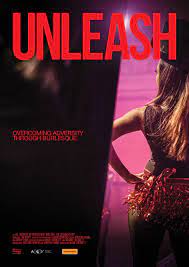
UNLEASH
Australia, 2022, 83 minutes, Colour.
Directed by Mark Cherrett.
Unleash is an unexpected documentary.
For the unwary, it opens with rather vivid striking burlesque performances, audiences noting that the performers are mostly middle-aged, even older. What to make of these performances?
Then, there is a transition to interviews with the women who are participating in the dance school which is leading to the final burlesque performance.
Here is the promotion paragraph from the producers in order to make an appeal for funds for the making of the film:
Melony Cherrett realised the need for this documentary after hearing stories from the diverse performers who joined her Adelaide-based burlesque-fusion dance community, Choo La La. Women of all backgrounds reported feeling a new self-confidence unleash inside themselves while performing that benefitted their everyday lives. While mothers find space to rediscover their identities, grandmothers rediscover their cheeky side. Divorcees appreciate an outlet to feel sexy and independent, people struggling with mental health find joy and connection, and socially isolated people fell they've found a ‘tribe’. Many believe they have the ‘wrong’ body type to try this form of self-expression. Melony knows self-confidence through dance is available for everyone, and wants to bring this message to the world. With a passionate team of creatives already committed, your financial assistance will help us make this documentary the best it can be, to reach and inspire the wider community. (Website, Australian Cultural Fund.)
And the scope of the film:
In the lead-up to performance night for a burlesque show, everyday Australian women share how burlesque helps them overcome challenges including the demands of motherhood and work, body image and feelings of isolation. With the support of the dance community, each woman find healing and experiences the transformative power of discovering her inner showgirl to unleash upon the stage. (Internet movie database).
The main comment for a review of this film is that it is important to listen to the women interviewed, as deep listening as possible. The women are wide-ranging, some of them with extraordinary physical disabilities, others with mental impairment, others lacking in self-confidence, others experiencing racist comments, and some of them extraordinarily exuberant.
In fact, for most of the film, there are glimpses of the rehearsals and the 10 weeks before the show, but the main emphasis is on giving the women an opportunity to express themselves, the sense of being a woman in contemporary society, sense of self, sometimes sense of inferiority, hard work, experience of inequality, one woman pregnant and looking forward to birth, another with four children, and many talking about popular expectations of body image and how they do not live up to these expectations, especially in the issue of size, body shapes, weight. (And, at the end of the film, one of the enthusiastically weighty participants is revealed to be a barrister, confined by wig and gown in her professional life but finding the dancing club extraordinarily freeing.)
There are not a great number of men in the film but they are supportive husbands, especially of 64-year-old, Vicki, more than enthusiastic, extroverted, checking everything out with her husband – and, for the finale song over the final credits, he singing and playing and she supportive.
An important film to undermine popular concept of what it is to be beautiful, to be understanding of a range of body shapes which do not measure up to requirements for beauty contests, for some feelings of liberation and affirmation for a whole range of women.